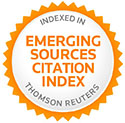A historiographical retrospective of the end of the 19th century: Bartolomé Gabarró and his <i>Gramática Pentáglota</i> (1886)
Keywords:
Bartolomé Gabarró, polyglot grammars, Spain, 19th century, historiography of foreign language didactics
Abstract
Polyglot manuals for the teaching and learning of vernacular languages enjoyed a wide dissemination across Europe since their appearance in the Renaissance. Spain stayed outside of this cultural initiative with regard to the publication of this type of manuals. So much so that the first polyglot work published in Spain corresponds to the one that we present in the following study, in a period that witnessed the slow decline of the polyglot manuals originated at the end of the 18th century. Gabarró’s Gramática Pentáglota [Pentaglot grammar], written in the late 19th century, gathers five modern languages for the very first time: Spanish, Catalan, French, English and Italian. This grammar initiates a new grammaticographic tradition such as putting in contact two languages that had never shared place in a same manual before: we are talking about Catalan and English. Our objective is to rescue a singular and unique in its genre work from oblivion, by means of a detailed study of its content and preceded by an introductory study on the forgotten figure of its author, Bartolomé Gabarró. Gabarró was a multifaceted and controversial character in his time who caused the (r)evolution of the Spanish social scene with the creation of a secular educational movement, unknown until then in Spain.Downloads
Download data is not yet available.
How to Cite
Lombardero Caparrós, A. (1). A historiographical retrospective of the end of the 19th century: Bartolomé Gabarró and his <i>Gramática Pentáglota</i> (1886). Signo & Seña, (33), 36-50. https://doi.org/10.34096/sys.n33.5256
Issue
Section
Dossier. Language as teaching content from a historical perspective
- Authors keep the copyright and give the journal the right of the first publication, with the work registered with the Creative Commons Attribution-ShareAlike 4.0 International License, which allows third parties to use what is published whenever they mention the authorship of the work and the first publication in this magazine.
- Authors can make other independent and additional contractual agreements for the non-exclusive distribution of the article published in this journal (eg, include it in an institutional repository or publish it in a book) as long as they clearly indicate that the work It was published for the first time in this magazine.
- Authors are allowed and recommended to publish their work on the Internet (for example on institutional or personal pages).

















